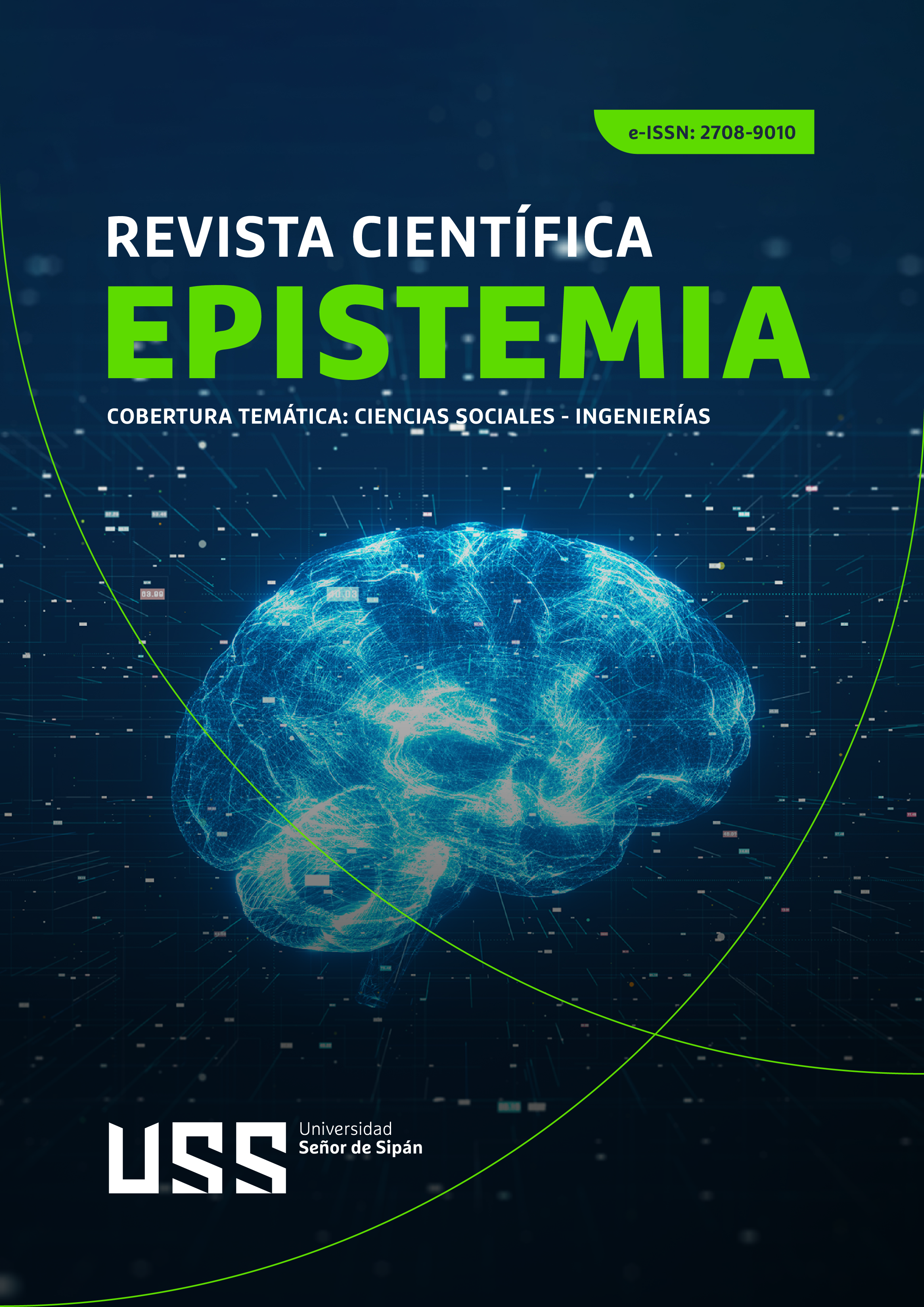Evaluation of the Antimicrobial Potential of Zingiber Officinale Essential Oil Against Candida albicans Strains. An In Vitro Study
DOI:
https://doi.org/10.26495/erc.2785Palavras-chave:
aceite esencial, Zingiber Officinale, Candida albicans, candidiasis, JengibreResumo
In this in vitro study, the antifungal properties of Zingiber Officinale essential oil against Candida albicans, a pathogen commonly associated with fungal infections in humans, were evaluated. The research design was applied, cross-sectional, and experimental. Zingiber Officinale was used as the study population, with 6 kg of rhizomes utilized for essential oil extraction using the Soxhlet technique. Antifungal activity assessment was conducted using the Kirby Bauer technique, with 15 repetitions on culture plates and inclusion of negative (DMS) and positive (nystatin) controls. Hypothesis testing employed inferential statistics with ANOVA and Tukey's post hoc test at a 95% confidence level. Results demonstrated significant sensitivity of Candida albicans to Zingiber Officinale oil at concentrations of 100% and 50%, comparable to the effect observed with nystatin as the positive control. Analysis of variance identified statistically significant differences among treatment groups, confirming the efficacy of Zingiber Officinale oil as an antifungal agent. These findings underscore the importance of researching and developing therapies based on natural compounds to address fungal infections, thus significantly contributing to the fight against resistant pathogens.
Downloads
Referências
[1] Manual MSD, "Introducción a las infecciones fúngicas de la piel - Trastornos de la piel", [En línea]. Disponible en: https://www.msdmanuals.com/es/hogar/trastornos-de-la-piel/infecciones-fúngicas-de-la-piel/introducción-a-las-infecciones-fúngicas-de-la-piel (Accedido: 25 de enero de 2024)
[2] Academia Española de Dermatología y Venereología (AEDV), "Infecciones Fúngicas", Actas Dermosifiliográficas, vol. 92, pp. 78-81, 2001.
[3] L. Hleba, M. Hlebová, and I. Charousová, "In Vitro Evaluation of Synergistic Essential Oils Combination for Enhanced Antifungal Activity against Candida spp", Life, vol. 14, no. 6, 2024, doi: 10.3390/life14060693.
[4] M. Paul-Satyaseela et al., "Novel hydroxamates potentiated in vitro activity of fluconazole against Candida albicans", J Nat Sci Biol Med, vol. 8, no. 1, pp. 119-124, 2017, doi: 10.4103/0976-9668.198349.
[5] A. A. Stepanov, D. V. Poshvina, and A. S. Vasilchenko, "Diacetylphloroglucinol Modulates Candida albicans Virulence", Journal of Fungi, vol. 8, no. 10, 2022, doi: 10.3390/jof8101018.
[6] INSST, "Candida albicans - Hongo - Agentes biológicos", [En línea]. Disponible en: https://www.insst.es/agentes-biologicos-basebio/hongos/candida-albicans (Accedido: 12 de mayo de 2024)
[7] J. Pineda-Murillo, A.A. Cortés-Figueroa, T.N.J Uribarren-Berrueta and L.R Castañon-Olivares, "Candidosis vaginal. Revisión de la literatura y situación de México y otros países latinoamericanos", Revisa Médica de Risaralda, vol. 23, no. 1, pp. 38-44, 2017.
[8] M. A. Mir, U. Rasool, S. Aisha, B. Alshehri, and S. S. Hamadani, "Chapter 1 - Human pathogenic microbes (bacterial and fungal) and associated diseases", in Human Pathogenic Microbes, M. A. Mir, Academic Press, 2022, pp. 1-30. doi: 10.1016/B978-0-323-96127-1.00002-4.
[9] WHO, "WHO fungal priority pathogens list to guide research, development and public health action", [En línea]. Disponible en: https://www.who.int/publications/i/item/9789240060241 (Accedido: 3 de julio de 2024)
[10] S. Zurita Macalupú, "Situación de la resistencia antifúngica de especies del género Candida en Perú", Revista Peruana de Medicina Experimental y Salud Publica, vol. 35, no. 1, pp. 126-131, 2018, doi: 10.17843/rpmesp.2018.351.3563.
[11] B. Bustamante, D. W. Denning, and P. E. Campos, "Serious fungal infections in Peru", Eur J Clin Microbiol Infect Dis, vol. 36, no. 6, pp. 943-948, 2017, doi: 10.1007/s10096-017-2924-9.
[12] M. Borges Sá, "Actualización sobre el tratamiento de las infecciones fúngicas graves", 2008. [En línea]. Disponible en: https://www.seq.es/seq/0214-3429/21/5/borges.pdf (Accedido: 24 de abril de 2024)
[13] M. Gutierrez Meneses and M. T. Neyra Alva, "Obtención y caracterización del aceite esencial de jengibre (Zingiber officinale)", Repositorio institucional – UNAC, 2017, [En línea]. Disponible en: https://repositorio.unac.edu.pe/handle/20.500.12952/3464 (Accedido: 13 de julio de 2024)
[14] T. Rinanda, R. P. Isnanda, and Zulfitri, "Chemical Analysis of Red Ginger (Zingiber officinale Roscoe var rubrum) Essential Oil and Its Anti-biofilm Activity against Candida albicans", Natural Product Communications, vol. 13, no. 12, 2018, doi: 10.1177/1934578X1801301206.
[15] S. Akroum, "Activité antimicrobienne des extraits de Rosmarinus officinalis et Zingiber officinale sur les espèces du genre Candida et sur Streptococcus pneumoniae", Annales Pharmaceutiques Françaises, vol. 79, no, 1, pp. 62-69, 2021, doi: 10.1016/j.pharma.2020.06.003.
[16] L. G. Ñahuis Sandoval and N. Enciso Yupanqui, "Efecto antibacteriano in vitro del extracto etanólico del zingiber officinale (kión) en cepas de escherichia coli", 2018, [En línea]. Disponible en: http://repositorio.uigv.edu.pe/handle/20.500.11818/3507 (Accedido: 13 de julio de 2024)
[17] L. M. Pelaez Loyola and S. M. Zavala Obando, "Efecto del extracto etanólico de los rizomas de zingiber officinale (jengibre) en el crecimiento de cepas patógenas de streptococcus pyogenes", 2016. [En línea]. Disponible en: https://hdl.handle.net/20.500.14414/1480 (Accedido: 24 de enero de 2024)
[18] A. E. Contreras Villavicencio, "Capacidad inhibitoria de los aceites esenciales del Jengibre (Zingiber officinale) y Pino (Pinus sp.) frente a la bacteria Xanthomona sp en condiciones in vitro", [En línea]. Disponible en: http://dspace.ups.edu.ec/handle/123456789/17277 (Accedido: 13 de junio de 2024)
[19] Clinical and Laboratory Standars Institute, "Reference Method for Broth Dilution Antifungal Susceptibility Testing of Yeasts" [En línea]. Disponible en: https://clsi.org/media/1897/m27ed4_sample.pdf (Accedido: 4 de julio de 2024)
[20] M. Mirshekar, M. H. Emami, and R. Mohammadi, "In vitro antifungal susceptibility pattern of Candida species isolated from gastroesophageal candidiasis", Gastroenterol Hepatol Bed Bench, vol. 14, no. 3, pp. 260-266, 2021.
[21] Kirby-Bauer Disk Diffusion Susceptibility Test Protocol, [En línea]. Disponible en: https://asm.org:443/Protocols/Kirby-Bauer-Disk-Diffusion-Susceptibility-Test-Pro (Accedido: 4 de enero de 2024)
[22] H. A. L. Jaramillo, C. A. E. Pinos, A. F. H. Sarango, and H. D. O. Román, "Histograma y distribución normal: Shapiro-Wilk y Kolmogorov Smirnov aplicado en SPSS", LATAM Revista Latinoamericana de Ciencias Sociales y Humanidades, vol. 4, no. 4, Art. n.o 4, 2023, doi: 10.56712/latam.v4i4.1242.
[23] t-Test, Chi-Square, ANOVA, Regression, Correlation, [En línea]. Disponible en: https://datatab.es/tutorial/levene-test (Accedido: 14 de febrero de 2024)
Downloads
Publicado
Edição
Secção
Licença
Direitos de Autor (c) 2024 Estenia Alberca Torres, Ronald Dilas-Castillo

Este trabalho encontra-se publicado com a Licença Internacional Creative Commons Atribuição 4.0.












